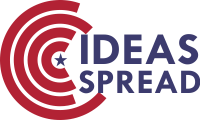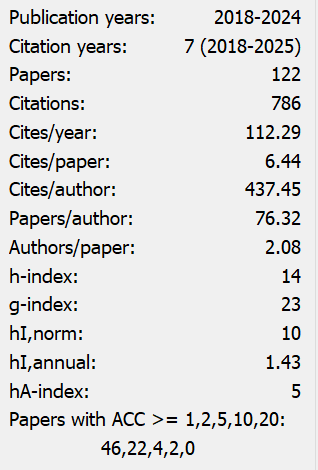Instrument for Testing Innovation on the Sustainable Growth of Manufacturing SMEs in Nigeria
A Pilot Study
Abstract
This paper is based on a pilot study which was conducted to test innovation on the sustainable growth of SMEs by focusing on the methodological viewpoints. The objective of the pilot study was to assess the viability, length of time, cost, and adverse effects of innovation on the sustainable growth of SMEs in Nigeria so as to enhance the design of the questionnaire before its full implementation. A review of the research instrument was performed by four multi-disciplinary academics who specialised in management, accounting, and strategic management, respectively. The aim was to ensure consistency in the questionnaire so that respondents would have no trouble completing them. The statistical package for social sciences (SPSS) Version 23 was used to assist in the exploratory factor analysis (EFA) which tests for reliability and the Cronbach alpha values were used to examine the content and face validity of the instrument. All the constructs and items used in the model were adapted from previous literature. The sample size used for the study comprised 100 respondents recruited from the SMEs operating in Nigeria. The findings showed that all the constructs in the model carried a high Cronbach alpha value of above 0.7. Therefore, all items used in the instrument were retained. This study is expected to contribute to the literature on methodological multivariate studies, the quantitative approach research on innovation, and the sustainable growth of SMEs.
References
Arora, L., Kumar, S., & Thapar, M. L. (2018). The anatomy of sustainable growth rate of Indian manufacturing firms. Global Business Review, 19(4), 1050-1071. https://doi.org/10.1177/0972150918773002
Awang, Z. (2015). SEM made simple: A gentle approach to learning structural equation modelling. Bandar Baru Bangi: MPWS Rich Resources.
Bento, S., Gaultney, W., & Dahlquist, L. (2020). An exploratory factor analysis of the procedural coping questionnaire. Children's Health Care, 49(1), 55-68. https://doi.org/10.1080/02739615.2018.1558058
Blair, J., & Conrad, F. G. (2011). Sample size for cognitive interview pretesting. Public Opinion Quarterly, 75(4). 636-658. https://doi.org/10.1093/poq/nfr035
Cheah, J. H., Sarstedt, M., Ringle, C. M., Ramayah, T., & Ting, H. (2018). Convergent validity assessment of formatively measured constructs in PLS-SEM. International Journal of Contemporary Hospitality Management, 30(11), 3192-3210. https://doi.org/10.1108/IJCHM-10-2017-0649.
Chen, Y. S., Lin, M. J., & Chang, C. H. (2009). The positive effects of relationship learning and absorptive capacity on innovation performance and competitive advantage in industrial markets. Industrial Marketing Management, 38(2), 152-158. https://doi.org/10.1016/j.indmarman.2008.12.003.
Cheng, C. C., & Huizingh, E. K. (2014). When is open innovation beneficial? The role of strategic orientation. Journal of product innovation management, 31(6), 1235-1253. https://doi.org/10.1111/jpim.12148
Collins, D. (2003). Pretesting survey instruments: An overview of cognitive methods. Quality of Life Research, 12, 229-238. https://doi.org/10.1023/A:1023254226592
Cooper, D. R., & Schindler, P. S. (2011). Business Research Methods (11th ed.). New York: McGraw-Hill.
Diamantopoulos, A., Sarstedt, M., Fuchs, C., Wilczynski, P., & Kaiser, S. (2012). Guidelines for choosing between multi-item and single-item scales for construct measurement: A predictive validity perspective. Journal of the Academy of Marketing Science, 40(3), 434-449. https://doi.org/10.1007/s11747-011-0300-3
Eggers, F., Kraus, S., Hughes, M., Laraway, S., & Snycerski, S. (2013b). Implications of customer and entrepreneurial orientations for SME growth. Management Decision, 51(3), 524-546. https://doi.org/10.1108/00251741311309643
Eggers, F., O’Dwyer, M., Kraus, S., Vallaster, C., & Güldenberg, S. (2013a). The impact of brand authenticity on brand trust and SME growth: A CEO perspective. Journal of World Business, 48(3), 340-348. https://doi.org/10.1016/j.jwb.2012.07.018
Garrett, R. P., & Neubaum, D. O. (2013). Top management support and initial strategic assets: A dependency model for internal corporate venture performance. Journal Production Innovation Management, 30(5), 896- 915. https://doi.org/10.1111/jpim.12036.
Gatignon, H., & Xuereb, J. M. (1997). Strategic orientation of the firm and new product performance. Journal of Marketing Research, 34(1) 77-90. https://doi.org/10.1177/002224379703400107
Gorsuch, R. L. (1983). Factor analysis (2nd Ed.). Hillsdale, NJ: Erlbaum.
Hadi, N. U., Abdullah, N., & Sentosa, I. (2016). An easy approach to exploratory factor analysis: Marketing perspective. Journal of Educational and Social Research, 6(1), 215. https://doi.org/10.5901/jesr.2016.v6n1p215
Hair, J. F., Black, W. C., Babin, B. J., & Anderson, R. E. (2010). Multivariate data analysis (7th ed.). Englewood Cliffs: Prentice Hall. https://doi.org/10.1016/j.jmva.2009.12.014
Halac, S. D. (2015). Multidimensional construct of technology orientation. Procedia-Social and Behavioural Sciences, 195(3), 1057-1065. https://doi.org/10.1016/j.sbspro.2015.06.149.
Hill, R. (1998). What sample size is “enough” in internet survey research? Interpersonal computing and technology: An Electronic Journal for the 21st Century, 6(3-4), 1-10.
Hoque, A. S. M., Awang, Z., Jusoff, K., Salleh, F., & Muda, H. (2017). Social business efficiency: Instrument development and validation procedure using structural equation modelling. International Business Management, 11(1), 222-231. https://doi.org/10.3758/s13428-016-0816-z
Isaac, S., & Michael, W. B. (1995). Handbook in research and evaluation. San Diego, CA: Educational and Industrial Testing Services.
Jung, S., & Lee, S. (2011). Exploratory factor analysis for small samples. Behaviour Research Method, 43, 701- 709. https://doi.org/10.3758/s13428-011-0077-9
Kelley, K., Clark, B., Brown, V. & Sitzia, J. (2003). Good practice in the conduct and reporting of survey research. International Journal for Quality in health care, 15(3), 261-266. https://doi.org/10.1093/intqhc/mzg031
Kline, P. (1994). An easy guide to factor analysis. New York: Routledge.
Lo, C. M., Wang, C. Y., Wah, J. R. C., & Ramayah, T. (2016). The critical success factors for organisational performance of SMEs in Malaysia: A partial least squares approach Review of Business Management São Paulo, 18(61), 370-391. https://doi.org/10.7819/rbgn.v18i61.3058.
Memon, M. A., Ting, H., Ramayah, T., Chuah, F. & Cheah, J. H. (2017). A review of the methodological misconceptions and guidelines related to the application of structural equation modeling: A Malaysian scenario. Journal of Applied Structural Equation Modelling, 1(1), 1-13.
Paswan, A. K., & Wittmann, C. M. (2009). Knowledge management and franchise systems. Industrial Marketing Management, 38(2), 173-180. https://doi.org/10.1016/j.indmarman.2008.12.005
Pearson, R. H., & Mundform, D. J. (2010). Recommended sample size for conducting exploratory factor analysis on dichotomous data. Journal of Modern Applied Statistical Methods, 9(2), 359-368. https://doi.org/10.22237/jmasm/1288584240
Pucihar, A., Lenart, G., Kljajić Borštnar, M., Vidmar, D., & Marolt, M. (2019). Drivers and outcomes of business model innovation-micro, small and medium-sized enterprises perspective. Sustainability, 11(2), 344-17. https://doi.org/10.3390/su11020344
Sang, L. T., Mail, R., Karim, M. R. A., Ulum, Z. K. A. B., Mifli, M., & Lajuni, N. (2017). Pretesting and piloting the research instrument to examine the central roles of risk perception and attitude towards financial investment behavioral intention among Malaysians. Journal of the Asian Academy of Applied Business, 4, 97-108.
Saunders, M., Lewis, P., & Thornhill, A. (2007). Research methods for business, 4th ed., Pearson Education, Harlow.
Saunders, M., Lewis, P., & Thornhill, A. (2012). Research methods for business students. Pearson Education Ltd., Harlow.
Sekaran, U. (2003). Research methods for business: A skill building approach (4th ed.). United State of America: John Willey and Sons, Inc.
Sheng, M. L., Chang, S., Teo, T. & Lin, Y. (2013). Knowledge barriers, knowledge transfer, and innovation competitive advantage in healthcare settings. Management Decision, 51(3), 461- 478. https://doi.org/10.1108/0025174131130960
Tang, T. L. P., Kim, J. K., & O’Donald, D. A. (2000). Perception of Japanese organisational culture: Employees in non-unionized Japanese owned and unionized US-owned automobile plant. Journal of Managerial Psychology, 15(6), 535-559. https://doi.org/10.1108/02683940010373383

This work is licensed under a Creative Commons Attribution 4.0 International License.
Copyright for this article is retained by the author(s), with first publication rights granted to the journal.
This is an open-access article distributed under the terms and conditions of the Creative Commons Attribution license (http://creativecommons.org/licenses/by/4.0/).


























